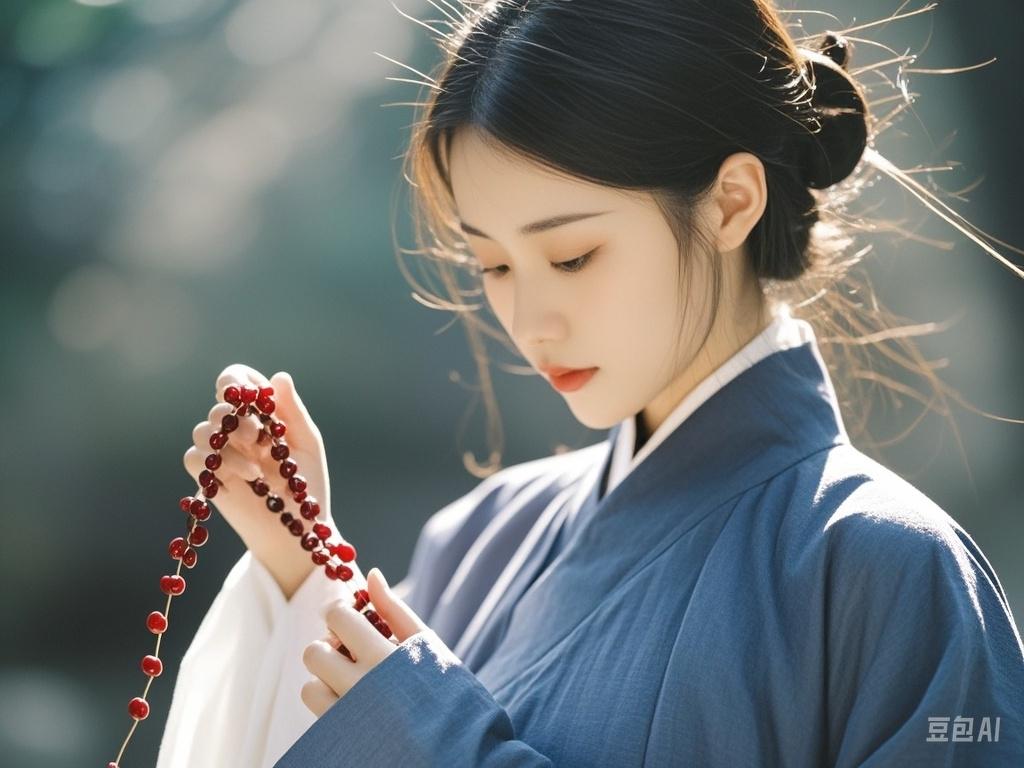In a small village nestled among rolling hills and mist-covered forests, there lived a man named Wei Ming. Wei Ming was a humble soul who had endured many hardships in life. He was born into a family of peasants and spent his youth struggling to make ends meet. Despite his best efforts, misfortune seemed to follow him at every turn. Whether it was failed business ventures, the death of loved ones, or personal health issues, his life had been a constant battle against adversity. The weight of his circumstances pressed heavily on his heart, and no matter how hard he tried to persevere, a deep sense of despair began to settle within him.
Seeking solace and guidance, Wei Ming traveled far and wide, consulting countless sages, monks, and spiritual teachers. Yet, despite his efforts, he found no lasting peace. His heart was restless, and his mind plagued with doubts. Finally, hearing of a reclusive Daoist master living high in the mountains, Wei Ming decided to make one last attempt. This master was known not only for his deep knowledge of Daoist philosophy but also for his ability to heal the spirits of those who sought his help.
The Encounter with the Daoist Master
Wei Ming embarked on a long and arduous journey up the mountain. After several days of climbing, he finally reached the hermitage of the Daoist master. The master, an elderly man with a serene and wise countenance, welcomed him with kindness and understanding. Without asking for details of his troubles, the master led Wei Ming into a quiet, dimly lit room, filled with the scent of incense and the soft glow of candles.
Sitting before a small altar adorned with symbols of the Dao, the master spoke, "You seek peace, young one, but peace cannot be found through struggle. It lies in surrender, in the acceptance of the flow of life. Daoism teaches us that we must align with the natural rhythms of the universe, for only then can we find true harmony."
Wei Ming listened attentively, but his heart was heavy. He longed for something more tangible, something that could help him in his moments of doubt and despair. The master, sensing his need, smiled gently and stood up. From a nearby shelf, he picked up a small jade pendant. The jade was a translucent green, with delicate veins of white running through it, almost like threads of light woven into the stone.
"This jade pendant," the master said, "is imbued with the energy of the earth. It is a gift from the natural world, a symbol of purity and protection. But this jade alone will not bring you peace. To unlock its power, you must pair it with the Daoist talisman I will give you."
The Daoist Talisman: A Key to Spiritual Transformation
With a delicate motion, the master unfurled a scroll. On it was a series of intricate symbols, written in the ancient Daoist script. The symbols were part of a fú (符), a Daoist talisman known for its power to channel spiritual energy and offer protection against negative forces. The talisman was said to be a conduit for the Qi (气), the vital energy that flows through all living things, and it could be activated through ritual and prayer.
The master carefully affixed the talisman to the back of the jade pendant, using a thread of red silk. As he did so, he recited a quiet incantation, invoking the celestial forces to bless the pendant and its wearer. The symbols on the talisman shimmered faintly as they absorbed the energy of the universe.
"Take this pendant and wear it close to your heart," the master instructed. "When you find yourself in doubt or despair, hold the pendant in your hand and recite the words of the talisman. In time, you will come to understand that the power of this talisman is not in the object itself, but in your own heart and your connection to the Dao. Remember, young one, Daoism teaches us that true power comes not from force or struggle, but from alignment with the natural order of the universe."
Wei Ming accepted the pendant with reverence, feeling the warmth of the jade and the quiet energy that seemed to pulse from the talisman. For the first time in years, he felt a glimmer of hope.
The Path of Peace: Transformation Through Daoist Wisdom
As Wei Ming made his way back down the mountain, the weight that had once burdened his heart seemed lighter. The jade pendant, with its attached talisman, hung from a simple cord around his neck, resting against his chest. Every so often, he would pause and hold it in his hand, feeling its cool smoothness and letting his mind settle. Each time he did so, he felt a sense of calm, as if the world’s burdens had momentarily fallen away.
In the days that followed, Wei Ming began to incorporate the teachings of the Daoist master into his daily life. When faced with difficult decisions or moments of uncertainty, he would silently recite the words of the talisman. As he did so, he noticed that his mind began to quiet, his anxiety began to dissipate, and a sense of clarity emerged. It was as though the talisman and the jade pendant were guiding him, helping him to see the world through a different lens—a lens of acceptance and flow.
He began to understand the principle of Wu Wei (无为)—the Daoist concept of "non-action" or "effortless action." This did not mean doing nothing; rather, it meant acting in harmony with the natural rhythms of life, without forcing or resisting. Wei Ming had spent much of his life trying to control every outcome, trying to force success and happiness. But now, as he practiced the teachings of the Dao, he understood that true peace could only be found through acceptance and surrender. By aligning with the natural course of things, he could live without fear, without grasping, and without struggle.
As the months passed, Wei Ming’s life began to change. He found that his business ventures flourished not because of his relentless effort, but because he had learned to work in harmony with the natural flow of opportunity. He no longer felt anxious about the future or burdened by the past. The talisman, paired with the jade pendant, had become more than just a symbol; it was a tool that helped him connect to the infinite wisdom of the universe.
The Inner Peace of Daoist Practice
In his moments of solitude, Wei Ming would sit in quiet meditation, focusing on his breath and the gentle weight of the jade pendant against his chest. The symbols of the talisman seemed to dance in his mind, their energy intertwined with the natural rhythms of his breath. It was during these moments that he felt the deepest connection to the Dao. In the stillness, he began to experience a profound sense of unity with the world around him, a sense that all things, from the smallest blade of grass to the vast sky above, were interconnected by an invisible thread of energy.
Wei Ming began to realize that the true source of his transformation lay not in the jade or the talisman, but in the inner shift that had taken place within him. The pendant and the talisman were merely reminders, physical objects that helped him focus on the Daoist path. But the true work was done in his heart and mind, where he had learned to let go of fear, to embrace the present moment, and to trust in the wisdom of the universe.
The Journey Continues
Years passed, and Wei Ming became a respected figure in his community—not for his wealth or status, but for his wisdom and serenity. People sought his advice, not on business or material gain, but on how to live with peace and harmony. He had become an embodiment of the Daoist philosophy, living a life of simplicity, balance, and effortless action.
One day, as he sat in his quiet study, the jade pendant resting gently in his palm, Wei Ming reflected on the path he had walked. The journey had not been easy, and there had been many moments of doubt and struggle. But through the guidance of the Daoist master, the power of the jade pendant, and the teachings of the Dao, he had found peace. The talisman, though still hanging around his neck, was no longer just a symbol of protection—it was a reminder of the deeper truth that he had come to understand: that peace, wisdom, and harmony are not things we seek outside ourselves, but qualities that arise from within when we align ourselves with the flow of the universe.
Conclusion: The Wisdom of Daoism in Everyday Life
Wei Ming’s life was a testament to the transformative power of Daoist philosophy, and the talisman and jade pendant served as powerful reminders of his connection to the Dao. Through the practice of Wu Wei, the understanding of Yin and Yang, and the embrace of the natural order, Wei Ming had learned to live a life of inner peace and spiritual fulfillment. And as he gazed at the jade pendant once more, he realized that the journey was not about seeking answers, but about learning to live in harmony with the ever-changing flow of life.



